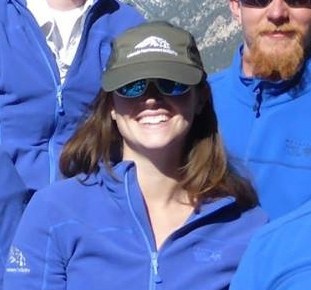Fourteeners hold many wonders: vast views of mountain tops, scenes of alpine lakes, amazing forests filled with spruces, pines and aspens, and also awesome wildlife. You may see elk, deer, moose, bear, birds and small mammals (squirrels, chipmunks, mice, etc.) below treeline. Above the trees we will also see small mammals (chipmunks, mice, voles, etc.), as well as, pika, marmots, big horn sheep and mountain goats. It is important to remember to be respectful to all things in nature including the wildlife that permanently reside in these spaces.
There is controversy that Mountain Goats are not native to Colorado and are pushing Big Horned Sheep away from their native habitat. However, On Quandary Peak there has been no sign of Big Horned Sheep, only these beautiful, curious, and urine loving goats. Yes, I did say urine loving. When hikers encounter these creatures, they may not come gouge someone with their sharp, pointy horns, but they will hound a hiker while they are urinating, due to the lack of salt in their diets. Our urine is filled with many minerals especially salt and a hiker can guarantee that once they step off trail for a bath room break, they will not be alone for long. Goats love the salt in our urine and they don’t care about your privacy or if you are finished peeing to get it. So if you see Mountain Goats in the area, make an attempt to not pee on vegetation, for they will tear it up to get all the salts a hiker has left behind. Alternatively, try to urinate on rocks. Also, carry a stick to keep them from getting too up close and personal. Even though these creatures might be a bit rude, they still rule these tops of the mountains and respect for their well being should always be given.

Colorado Mountain Goat with kid (young goat behind mom) on Quandary Peak
Our 14ers only have a few animals that live up high year round, and these cute mammals are by far one hikers’ favorites. This mammal is not considered a rodent, such as the marmot, but are instead related to the rabbit family. Along with the ptarmigan (the only bird that lives in the alpine all year round), the pika does not hibernate. A hiker will notice the pika cruising through the rocks collecting alpine vegetation to add to their “haystacks,” which they spend an insane amount of energy building all summer long. A hiker will notice a bouquet of various flowers and grasses of the alpine in their mouths. Pika build these haystacks under talus (large rocks) to survive the intense winters up above treeline. They use these haystacks to stay warm and to eat.
Due to their high energy nature, it is important to keep dogs on a leash. Pikas spend so much energy collecting for the winter, that any extra energy given to escape from a hiker’s dog will most certainly diminish the chance of surviving the winter months. Pikas’ main predators are birds of prey and weasels. There are no trees in the alpine for them to scurry up for safety, so the likely hood of a loose dog taking out a pika family is very high. Pika are considered indicator species and the Front Range Pika Project is monitoring them to see what climate change is doing to these little critters. Respect your tiny hosts in the alpine and please keep your dog leashed.
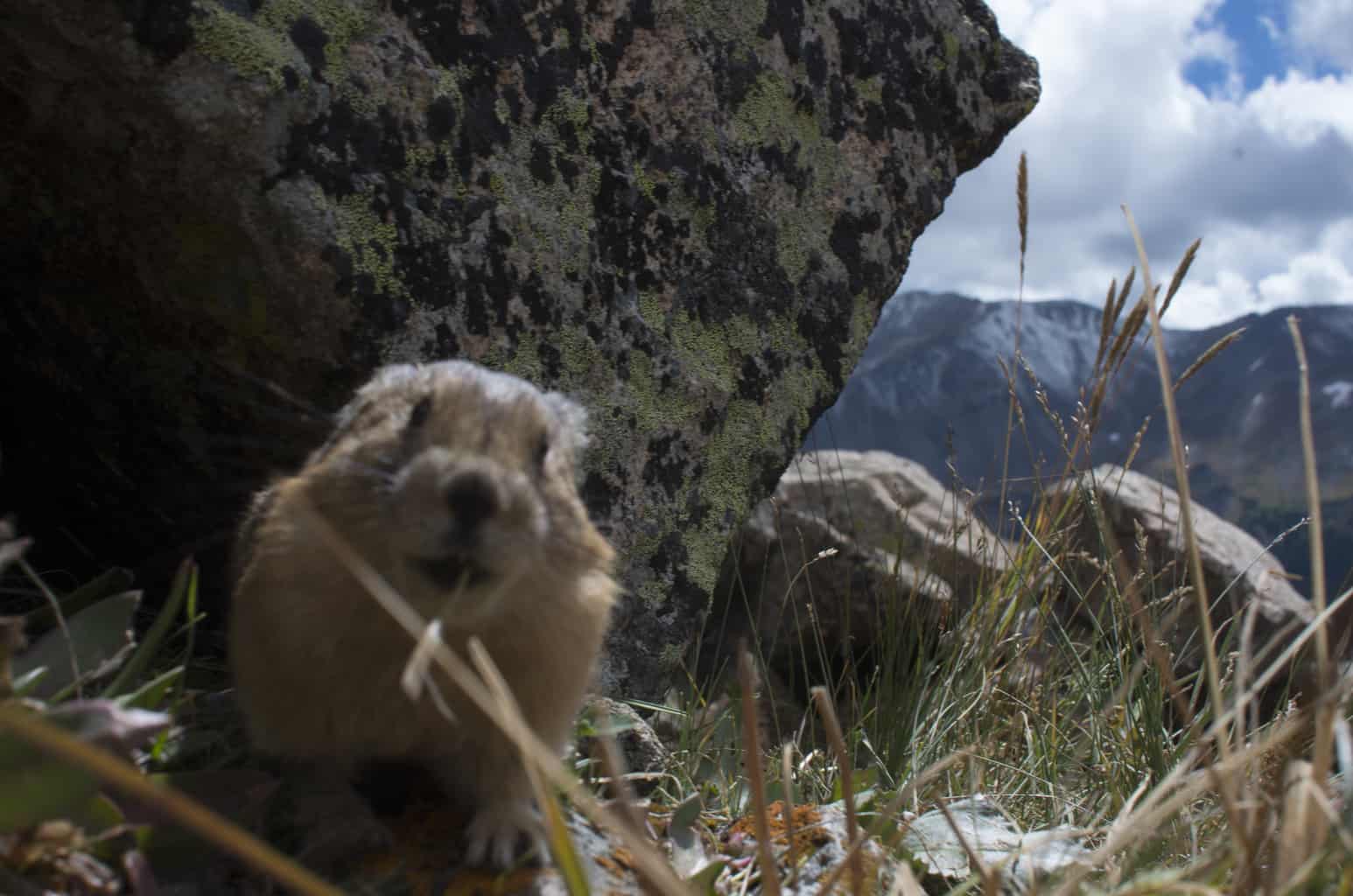
American Pika in Horn Fork Basin- Mount Columbia
Marmots and pikas go hand in hand. If a hiker sees one they will almost certainly see the other. Sometimes pikas will use marmots’ homes as their homes. Marmots, however, do hibernate during the winter and spend their summer months getting tremendously fat! They also spend a lot of time basking in the sun. By spring, they will have lost half of their weight. A marmot’s call is very high pitched and loud, which is where they also get the name “whistle pig.” These critters are non-aggressive towards humans, but make sure your lunch is close at hand and anything sweaty is at a distant, for they will steal your food and chew on what-ever is sweaty for the salt.
These animals do not need free handouts. They have plenty of their own food, which is largely the alpine vegetation. This vegetation contains the nutrients that a marmots needs to survive their hibernation. The protein bar a hiker may carry around will not have the same nutrients and will not benefit the marmot in any way for hibernation. Be good guests – do not feed the wildlife. Fun fact about these larger rodents; when they emerge from their dens after winter they are bleached. This is due to them peeing on themselves while in a deep slumber.
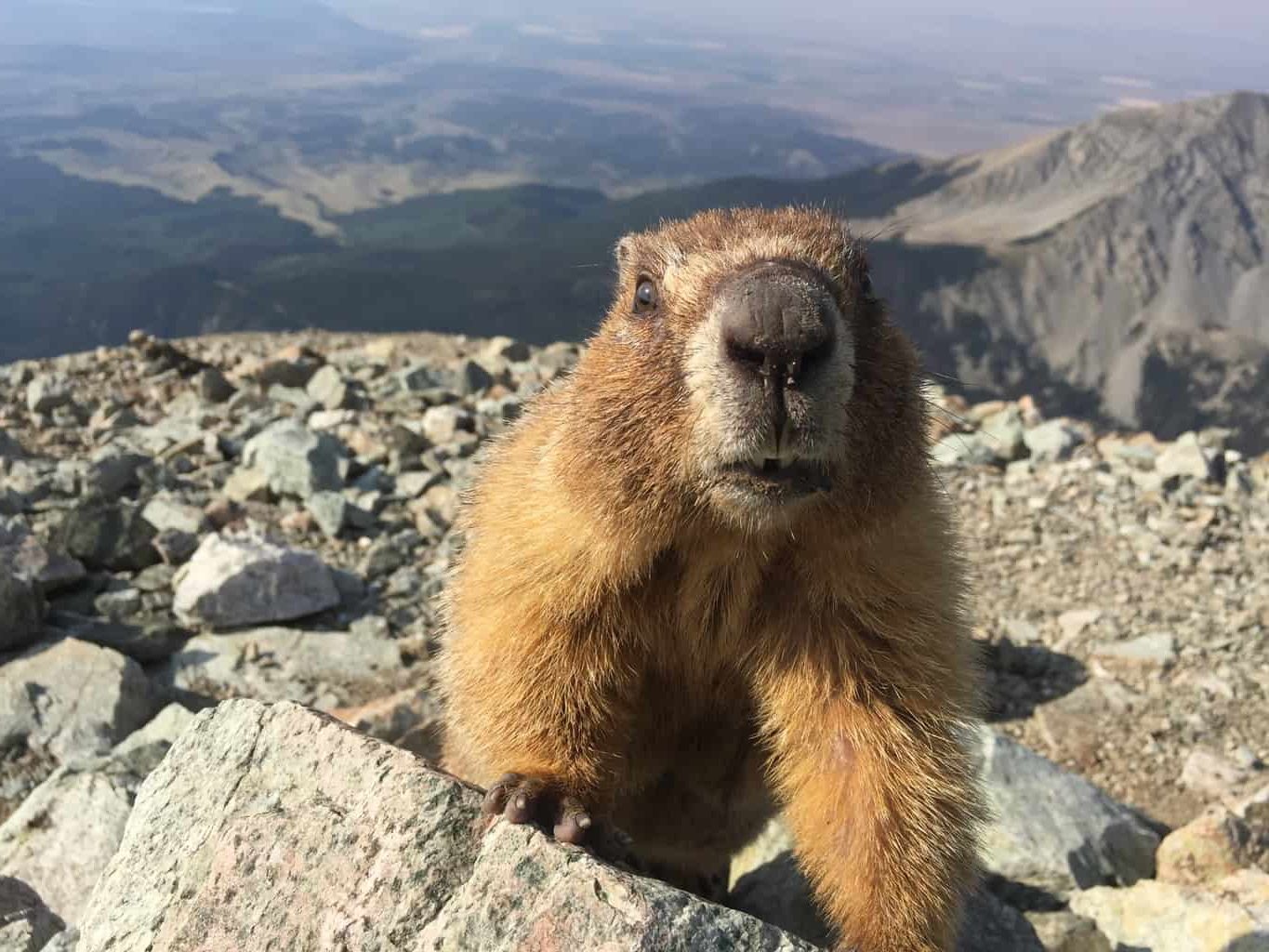
A marmot, particularly interested in my food, on the summit of Mount Lindsey
Unlike the mountain goat, big horned sheep are brown with big tan, whitish butts. Their horns, if male, start to curl and a hiker can tell how old a male sheep is based off the curl of their horns. Female sheep, or ewes also have horns, but they grow only a few inches in length and do not curl. These beauties are becoming threatened, mainly from sickness and disease. The herd found around Willow Lake, is one of the few healthy herds in the state of Colorado. The main disease harming the sheep is called pasteurella, which is a respiratory disease that is carried by domestic livestock. Mostly the lambs are infected, due to their immature immune systems. Without the young surviving, herd numbers have remained low since the 1990s when the illness was first documented.
As mentioned with the goats, there is controversy as to if the goats have caused sheep numbers to diminish as well, by moving into their natural habitats, thus pushing the big horns out. If you have livestock, make sure you follow feed instructions set by the local ranger district and make sure no sick livestock are being brought into the big horns’ habitat. Also, like the goats, sheep like human urine as well. But as good guests to the surrounding habitat make sure the urine is on rocks or even in the crevice of downed tree. Protecting the vegetation is just as important as protecting the wildlife!
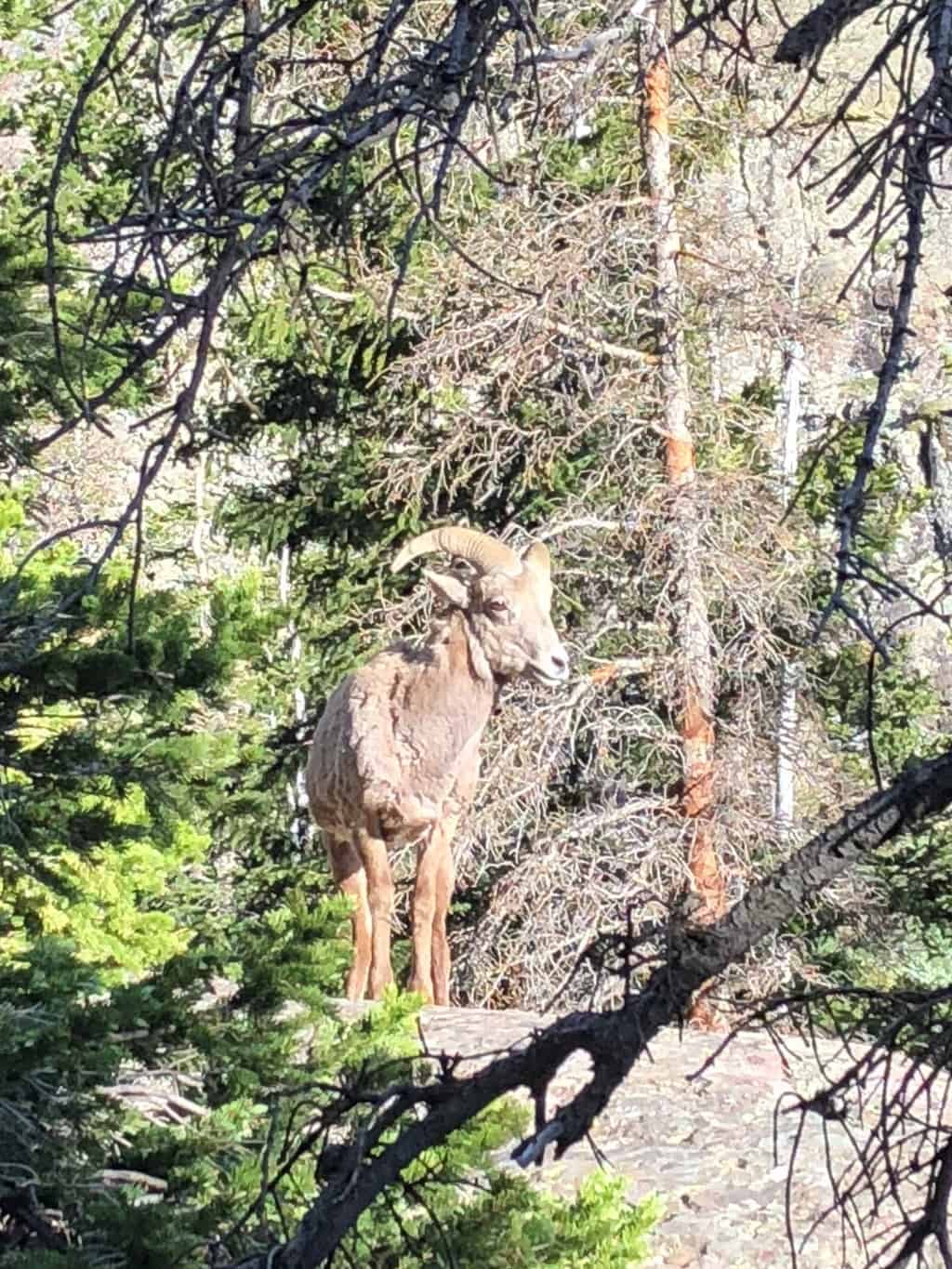
Big Horned Sheep around Willow Lake, Kit Carson
This photo evokes lots of emotions. Here is a beautiful, majestic, young black bear that stood about 4 feet high. The reason I get emotional when I see this photo is because a few months after taking this photo this bear had to be put down by CPW. Why? It was being a “naughty” bear, ripping into people’s tents, along with the RMFI crew’s base camp. Before CPW went in the crew tried to use bear spray to deter it from wondering into the camps. The crews also had a fancy bear hang that they would allow hikers to use, and the crew warned and educated hikers about the bear and the importance of having a proper bear hang in this area. It was frustrating to hear, that while the majority of hikers would use their bear hang or had other means of protecting their food from the bear and thus protecting the bear, some individual parties would not take the offer and kept food in their tents. Bears can smell food from about 20 miles away. 20 miles away! A hiker can bet that bears are smelling their food with ease.

Black Bear around Willow Lake, Kit Carson
Here is the sad, unjust truth when it comes to “naughty” bears. Humans in the backcountry leave their food in their tents and it only takes one time to entice a bear to break into a tent for that food. Once that bear learns it can easily get food, every tent it sees after that it will break into, in hopes of finding some sweet morsels. Momma bears will even teach their cubs to do this, thus creating a generation of “naughty” bears. Was this really the bears fault? NO! It was the human who didn’t properly educate themselves, but do they get reprimanded for this behavior? Again, no. If CPW can relocate the bear, which is ideal they will. If the offense keeps happening or they can’t relocate the bear, then the fate of the bear is death.
So how can we as humans keep this from happening and be decent guests for the bear? Keep your food properly contained. There are bear proof containers that can be purchased or hang your food. This does not mean find a small branch within arm’s reach and hang it, nor does it mean keep your bear proof container close to your tent. There are a few ways to hang food the images below (taken off of google images) show what a proper bear hang should look like. Bear hangs should be high enough, about 12 feet, so the bear can’t touch it and far enough from the tree, about 6 feet, so the bear cannot climb up to it. Bear containers should be a far enough distance from the tent that bar doesn’t associate the camp with the food it is looking for. If it takes too much energy for the bear to obtain this food, it will not try to take the food. Therefore, leaving people with food in the back country and the bear safe from death.
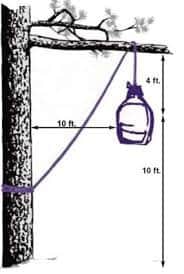
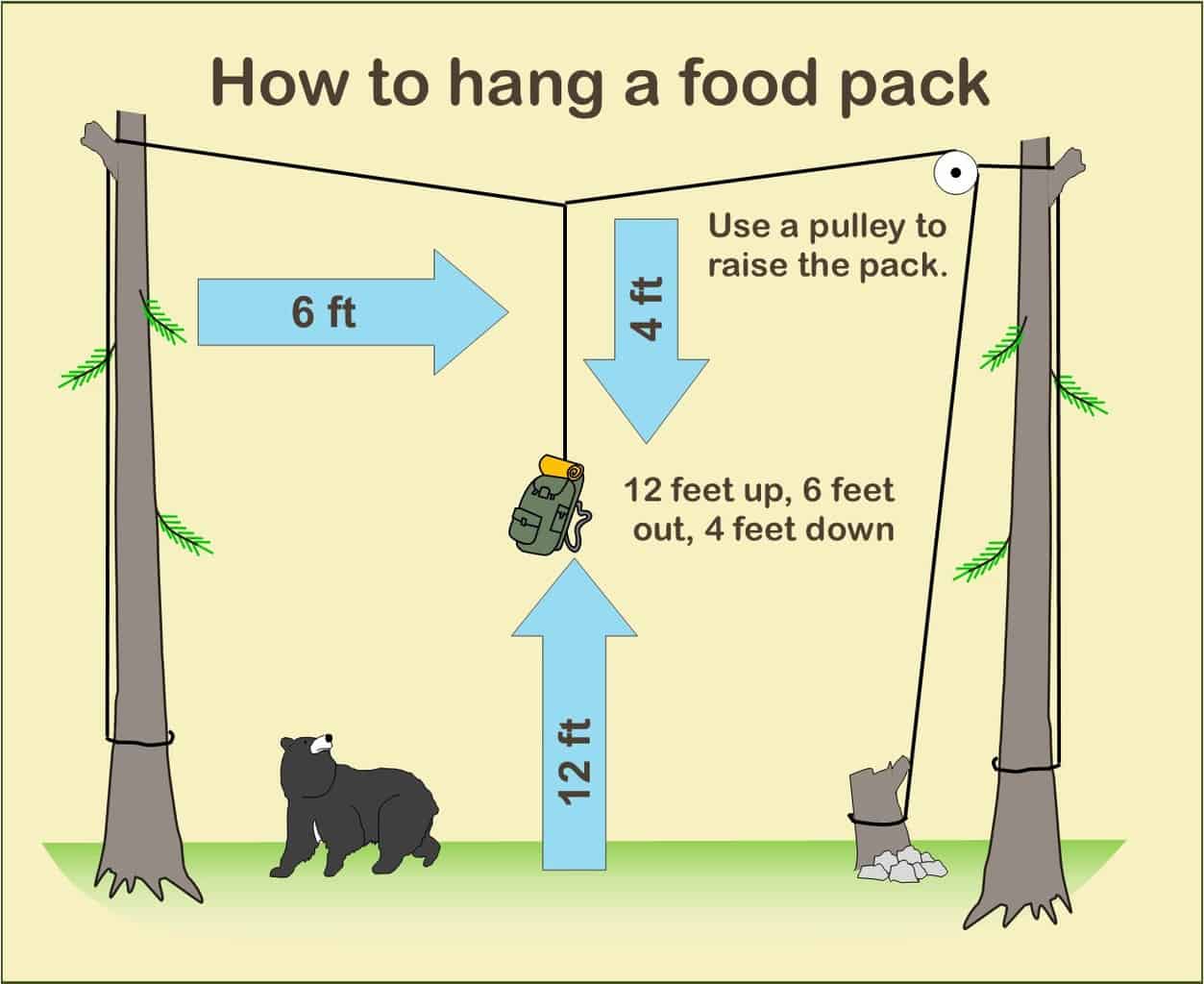
We do not live in these woods year round. We are visitors. Guests. As any good guest, we need to remember to respect and appreciate what our hosts are offering us. Here are a few things to remember:
- Keep your hosts home clean by packing out all your trash
- Keep voices low to hear your hosts and appreciate their beauty
- Have ear buds in while listening to music, because your hosts don’t care to hear it, not to mention most hikers are in nature to hear nature not music.
- Keep your food to yourself, your hosts have plenty of their own that contains better nutritional value for them then our food does.
- Keep your domestic animals on leashes, some of your hosts (pikas, marmots, ptarmigan) are more adapted to site predators and not canine predators. They are adapted to stay put and blend in with their environments leaving it easy prey for a dog to snatch them up. Not to mention some of our hosts are carriers of rabies, so let’s keep our dogs safe as well.

